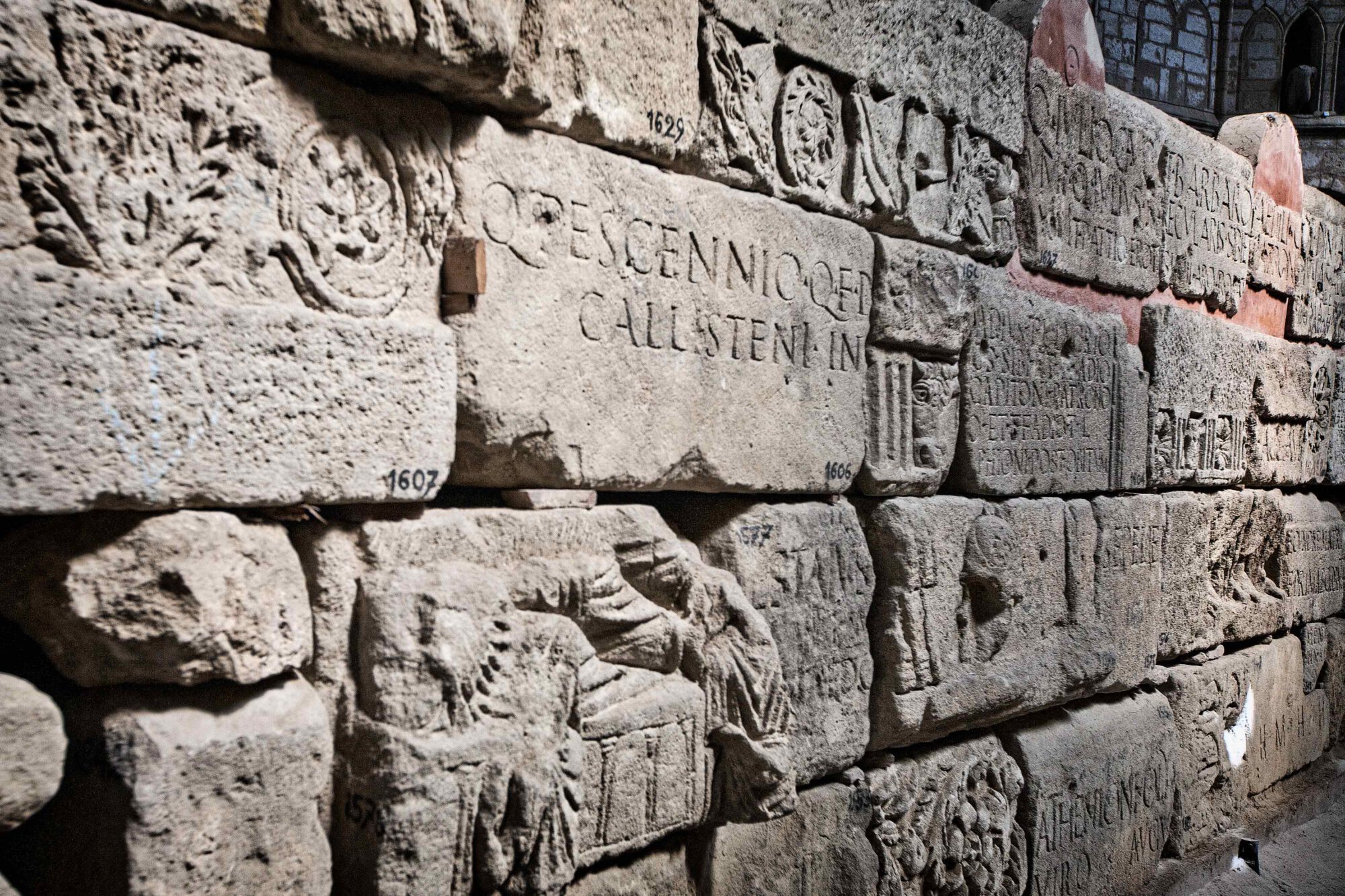Via Aquitania. Today it leads across the regions of Languedoc, Midi-Pyrénées and Aquitaine connecting the cities of Narbonne (Colonia Narbo Martius), Toulouse (Tolosa) and Bordeaux (Burdigala). The Romans conquered the region in 56 B.C.. Not only did they settle the area without much conflict, they also brought with them their knowledge and civilisation. Streets were built, city plans were drawn up and splendid villas were built. The Romans introduced both their language and their wine. They are to thank for the first grapevines, “biturica” in Latin.
Narbonne: the first colony to be founded outside of Rome by the Romans. Narbo Martius, capital of the Roman Province of Gallia Narbonensis, was the second-largest Roman port after Ostia – there was a long-standing rivalry for the title with the cities of Arles and Marseille. It was a trading centre for wares and materials coming from and going to Rome; metal from Aquitania, grain, oil, amphorae and slaves from Brittany and Spain. Roman merchants had a reputation for being ruthless traders. Merchant culture is still blooming, albeit in a more modern way, in the “Halles de Narbonne”.
Not far from Narbonne, the area around Cruscades was already inhabited at the time of the Roman Emperor Caesar. The winemaking history of Corbières began when the Romans planted the first grapevine here in 125 B.C.. Today, Via Aquitania leads through the “Château Coulon” and “Château Vérédus” vineyards. Even in antiquity, wine was transported between Narbonne and Toulouse. According to written sources, large amphorae, which were subject to transportation tax, were used. In the Fabre family vineyards, writer and director Jeremy J.P. Fekete meets owner and winemaker Louis Fabre who continually uncovers pieces of earthenware wine jugs when working in the fields.
Further along Via Aquitania, Montauban, a city lying approximately 50 kilometres north of Toulouse at the mouth of the River Tescou, a tributary to the River Tarn. Near the River Tarn there are many, often elegant, dovecotes, called “pigeonniers”. Their silhouettes are a feature of the landscape. In ancient Rome, messenger pigeons were used primarily by the army. Sent with news of uprisings in conquered Gaul, pigeons could quickly carry orders from Commander Julius Caesar to his troops. Even in those days the messages were tied to the pigeons’ feet. Pigeon post was widespread in the Roman Empire, especially in the fourth century. At one time the state used as many as 5,000 of the messengers.
Not far from Bazas, in the middle of the Sauternes region, a small piece of Via Aquitania’s stone road, artistically located among the vineyards, shows the spot where Via Cassia met the Gaulish road “Chemin Gallien”. It was not discovered until the 1970s. Today a small society looks after the paved pathway. Bordeaux was already known as “little Rome” back in Roman times, and this is where Via Aquitania ends.

